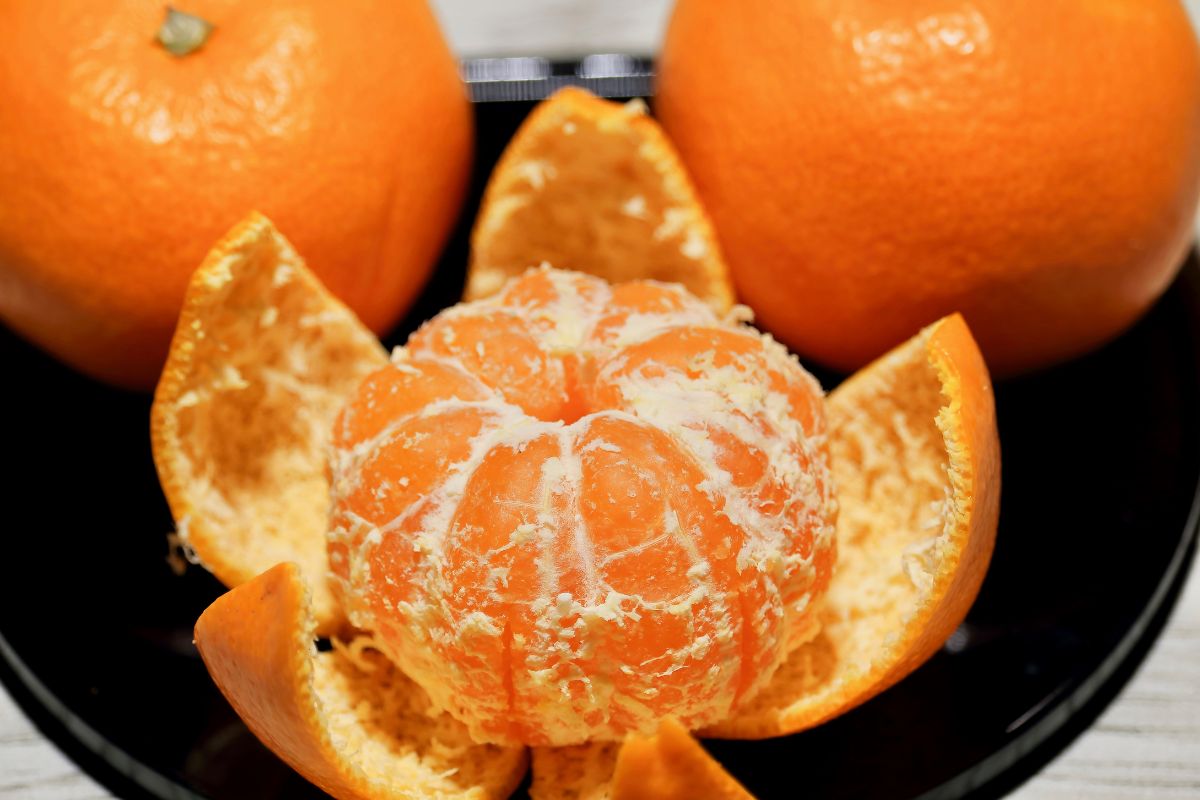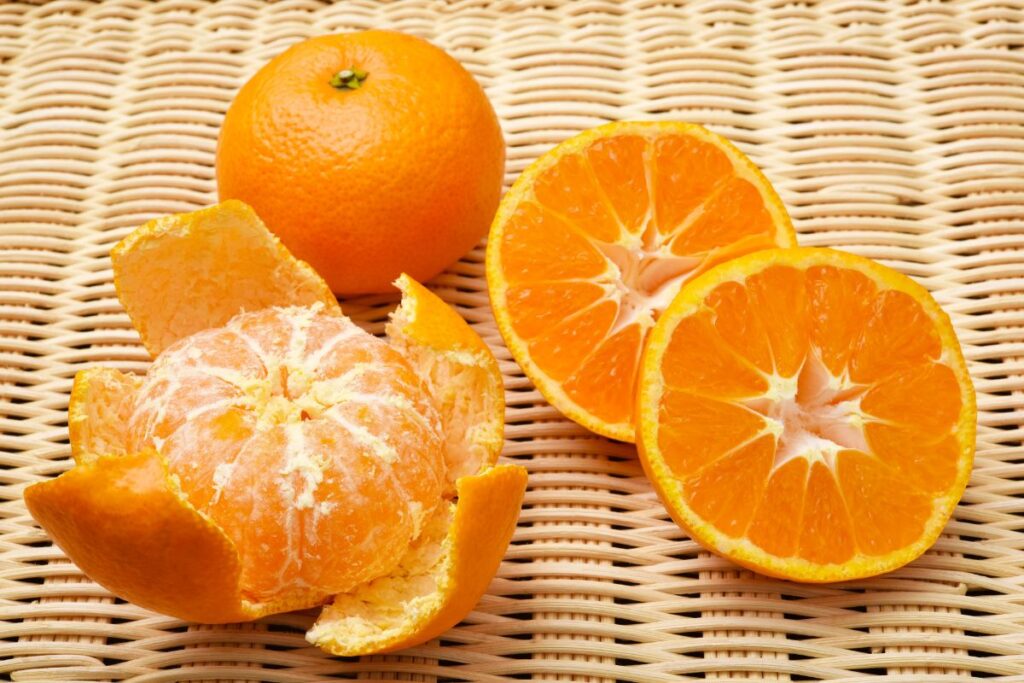Right, let’s keep this simple.
You’re in the kitchen; maybe you’ve just popped the kettle on, and there’s a bowl of satsumas sitting on the counter. You pick one up, peel it in a few quick swipes, and think, “Hang on, how many calories are actually in this?”
Well, the short answer: Roughly 35 to 45 calories in one medium satsuma.
But let’s not stop there. Let’s have a proper chat about it.
What Even Is a Satsuma?

Satsumas are those small, soft, easy-peel oranges you get a lot of around Christmas. You know the ones. No seeds, barely any pith, super juicy. They’re sweet, not too sharp, and kids love them. Grown-ups do too, if we’re being honest.
You might chuck one in your bag on the way out, keep a few in a fruit bowl at work, or stick a couple in your child’s packed lunch. No mess, no fuss.
So, About Those Calories…
Let’s get into the details.
If you’re holding an average satsuma – we’re talking about one that fits nicely in your hand, not one of those tiny ones that’s all peel – you’re looking at:
- 35 to 45 calories
- About 9 grams of sugar (natural, not added)
- Just over 1 gram of fibre
- A very small amount of protein and fat
So not much at all, really. You could have two satsumas and still not hit 100 calories.
That’s less than a slice of toast.
Small One or Big One?
Size matters (well, it does here). A smaller satsuma might have just 30–35 calories, while a big juicy one could be closer to 50. But even then, that’s still lower than most snacks you’d grab when you’re feeling peckish. A biscuit? Easily 80–100 calories. A packet of crisps? Don’t even ask.
So if you’re reaching for a snack, a satsuma’s a pretty safe bet.
Where Do the Calories Come From?
Nearly all the calories in a satsuma come from its natural sugars. Not the bad kind you find in chocolate bars or fizzy drinks—this sugar comes with fibre, water, and vitamin C.
There’s next to no fat. Barely any protein either. But it’s fruit—it’s meant to be light.
What’s Good About Them (Other Than the Taste)?
For starters, they’re ridiculously convenient. You don’t need a knife or a chopping board. Just your fingers. No juice dripping down your arm, no sticky mess.
You also get:
- A good amount of vitamin C (great for your immune system)
- Some fibre (helps keep things moving)
- A bit of potassium
- And, maybe best of all, a snack that feels like a treat without actually being naughty
Let’s Talk Real Life
So, imagine this. You’ve got the afternoon slump. Maybe you’re working from home. Maybe you’ve just got in from the school run. You’re hungry. You open the cupboard and see some biscuits, but you also remember those satsumas you bought on Sunday.
You peel one, take a bite—it’s cold, juicy, and sweet. A couple of minutes later, you feel better. Not stuffed, not sluggish—just right.
And you’ve only had 40 calories. That’s less than a cup of tea with sugar.
Can You Have More Than One?
Absolutely. Two satsumas = about 80 calories. That’s still under what most single snacks would be. You could have three and still be under 120.
Plus, because they’ve got fibre, they help you feel full for longer. Not full full, but satisfied enough to stop raiding the fridge.
Watching Your Sugar?
If you’re keeping an eye on your sugar intake, especially for health reasons, it’s good to know that a satsuma has around 8–9 grams of natural sugar. That’s about two teaspoons. But remember—it comes with fibre and water, which helps your body handle it better than, say, a sweet.
If you’re diabetic or just trying to cut down, one or two satsumas should be fine. Just avoid eating five in one go.
Satsumas vs Juice
This one’s important. A glass of orange juice might have the juice from 3–4 satsumas. So while it might seem like a healthy choice, it can pack more than 120 calories in one go—and none of the fibre.
That’s why eating the actual fruit is better. You chew it. You take your time. You get full. Juice doesn’t really do that.
When’s the Best Time for One?
Whenever, really.
- Morning – with your cuppa, or as part of breakfast
- Midday – as a little something between meetings or chores
- After lunch – when you fancy something sweet
- Evening – instead of reaching for the chocolate
You could even keep a couple in the car. They hold up well and don’t melt like a bar of chocolate would.
A Little Story
My nan used to keep a bowl of satsumas on the table all winter. I remember walking into her house and smelling that bright citrus smell. She’d always offer one before tea. Said it was “something light to hold you over”.
So, How Many Calories Are in a Satsuma?
To wrap it up—around 35 to 45 calories, depending on size.
It’s not a big number, but satsumas punch above their weight. Sweet, juicy, easy to carry, full of goodness. And if you’re trying to eat a bit better without giving up flavour or joy, they’re one of the best things you can have in your fruit bowl.
Next time you’re heading out, stick one in your coat pocket. It’s a good little habit. And when that mid-morning hunger kicks in, you’ll be glad it’s there.
Go on—grab one now. You’ve probably earned it.

